Understanding Numerator
What is a Fraction?
A fraction represents a part of a whole or a part of a group. It consists of two numbers separated by a line, where the top number is called the numerator and the bottom number is called the denominator.The Numerator
The numerator is the number above the fraction line. It represents the number of equal parts being considered or the number of parts that you have. For example, in the fraction 3/5, the numerator is 3, indicating that we are talking about 3 out of the 5 equal parts.Visualizing Numerator
Fractions can be visualized using shapes such as circles or rectangles divided into equal parts. The numerator tells us how many of those parts we are considering. For example, in a circle divided into 8 equal parts, if 3 parts are shaded, the numerator of the fraction representing the shaded portion would be 3.Equivalent Fractions and Numerator
When you multiply or divide both the numerator and the denominator by the same number, you get an equivalent fraction. The relationship between the numerator and the denominator remains the same. For example, 3/5 is equivalent to 6/10. The numerator (3) is multiplied by 2, and the denominator (5) is multiplied by 2 to get the equivalent fraction.Practice Questions:
1. What is the numerator in the fraction 4/7? 2. If a rectangle is divided into 10 equal parts and 3 parts are shaded, what is the numerator of the corresponding fraction? 3. How are the numerator and denominator related in equivalent fractions?Answers:
.◂Math Worksheets and Study Guides Fourth Grade. Money
Study Guide Money
Money  Activity Lesson
Activity Lesson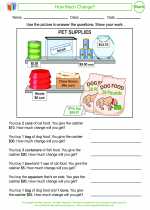 How Much Change?
How Much Change?  Activity Lesson
Activity Lesson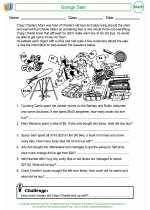 Garage Sale
Garage Sale  Activity Lesson
Activity Lesson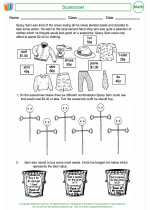 Scarecrow!
Scarecrow!  Worksheet/Answer key
Worksheet/Answer key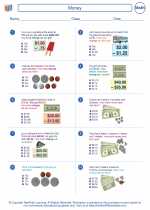 Money
Money  Worksheet/Answer key
Worksheet/Answer key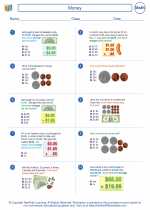 Money
Money  Worksheet/Answer key
Worksheet/Answer key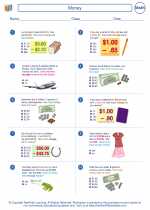 Money
Money  Worksheet/Answer key
Worksheet/Answer key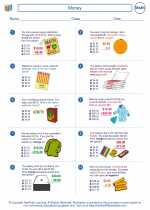 Money
Money  Worksheet/Answer key
Worksheet/Answer key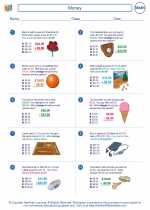 Money
Money  Worksheet/Answer key
Worksheet/Answer key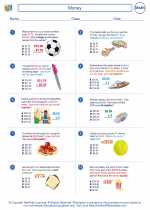 Money
Money  Worksheet/Answer key
Worksheet/Answer key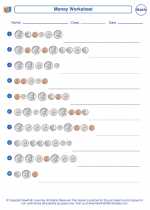 Money
Money 

 Activity Lesson
Activity Lesson
 Activity Lesson
Activity Lesson
 Activity Lesson
Activity Lesson
 Worksheet/Answer key
Worksheet/Answer key
 Worksheet/Answer key
Worksheet/Answer key
 Worksheet/Answer key
Worksheet/Answer key
 Worksheet/Answer key
Worksheet/Answer key
 Worksheet/Answer key
Worksheet/Answer key
 Worksheet/Answer key
Worksheet/Answer key
 Worksheet/Answer key
Worksheet/Answer key

Create And Print more Money worksheets with Money Skills Worksheets generator
The resources above cover the following skills:
Algebra (NCTM)
Use mathematical models to represent and understand quantitative relationships.
Model problem situations with objects and use representations such as graphs, tables, and equations to draw conclusions.